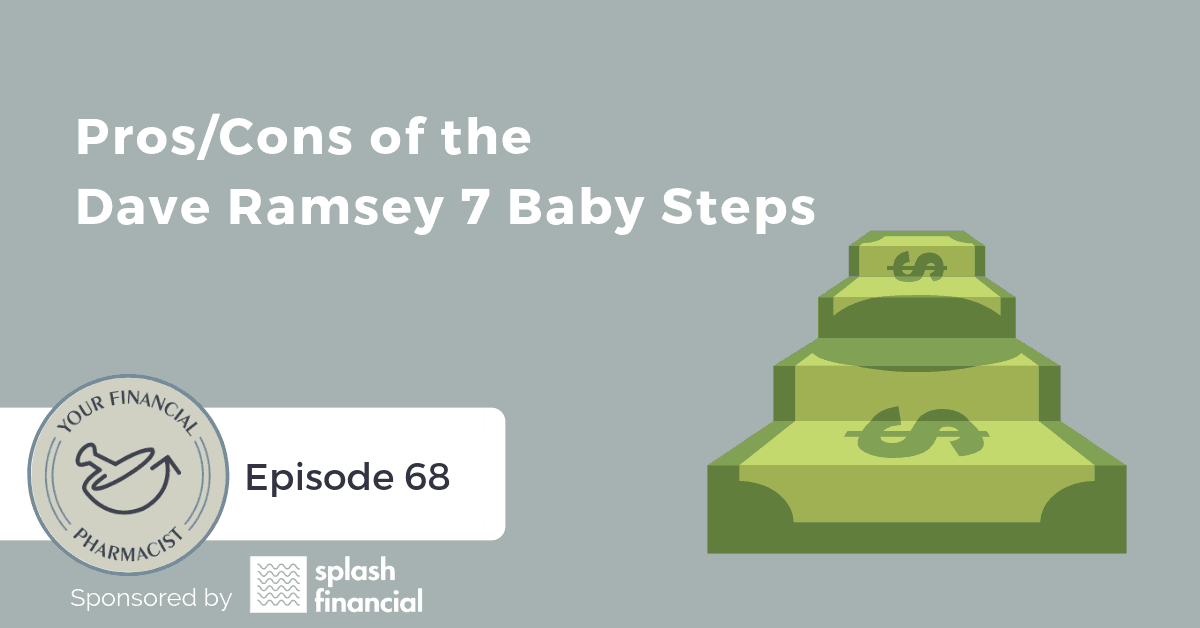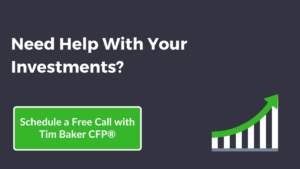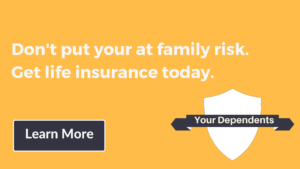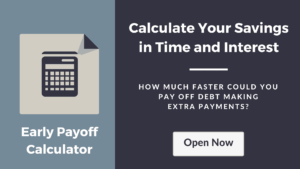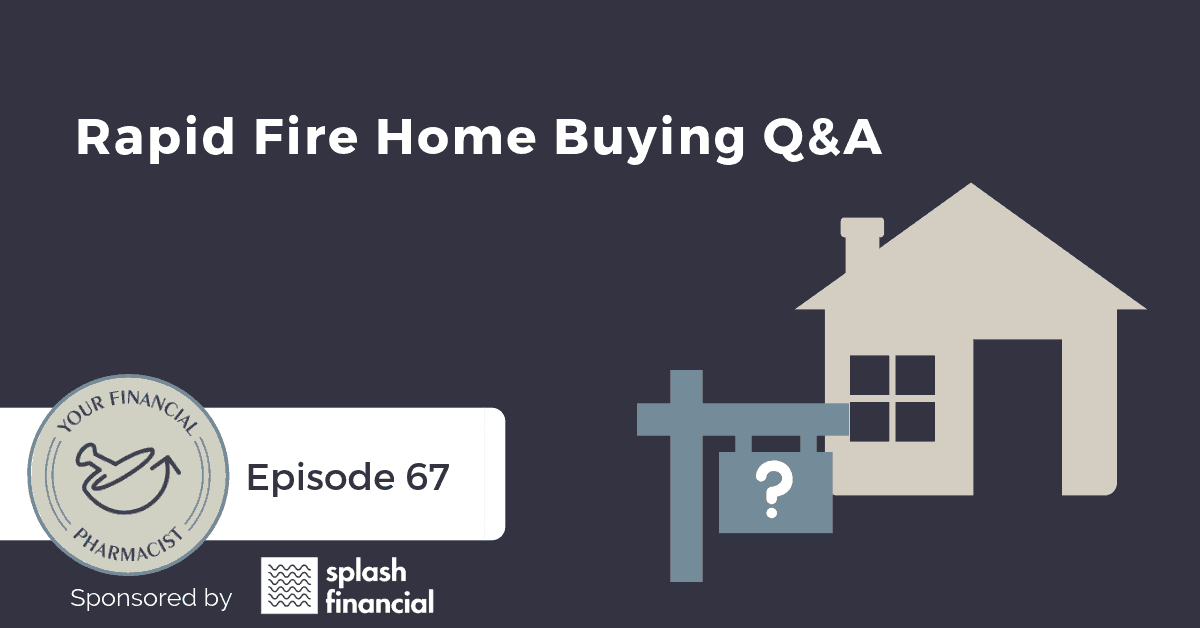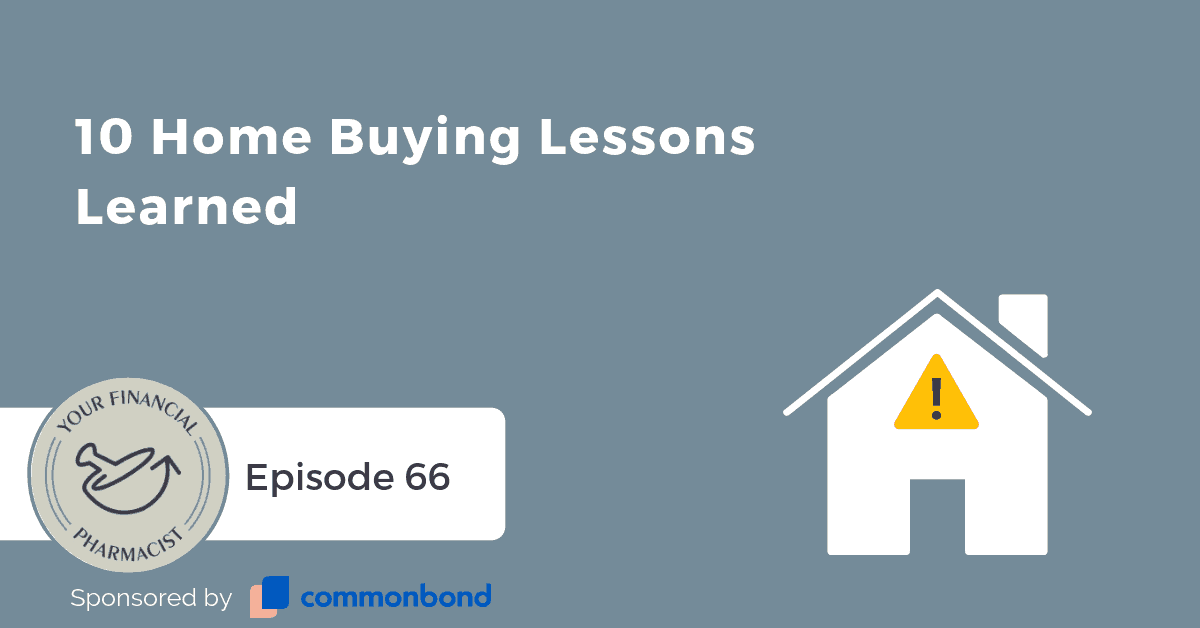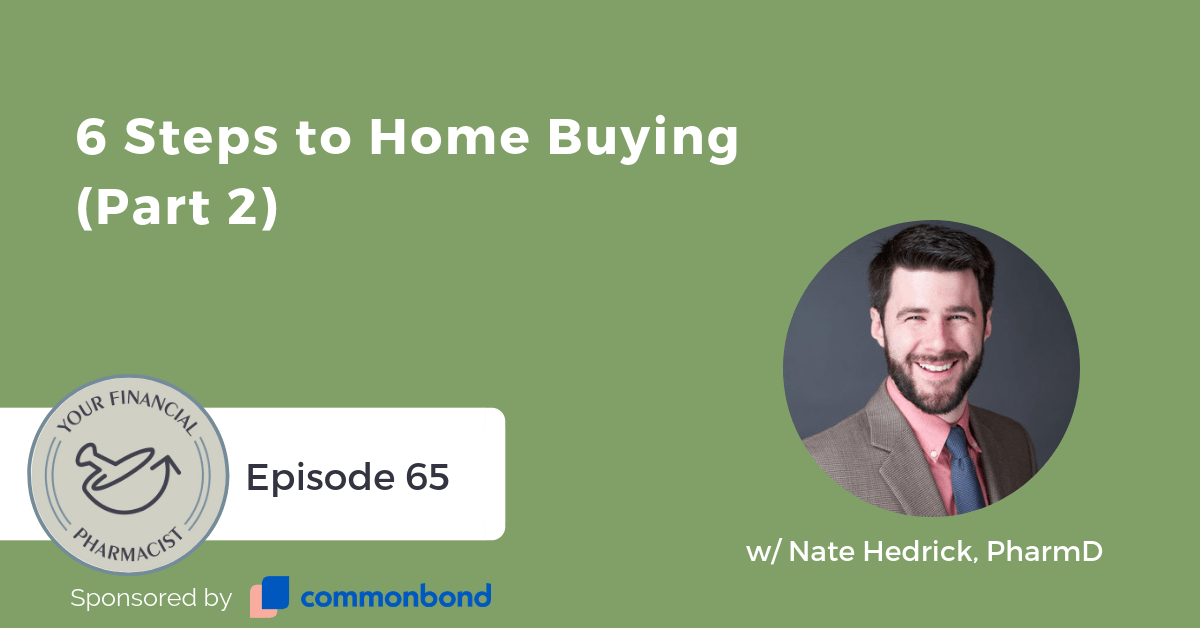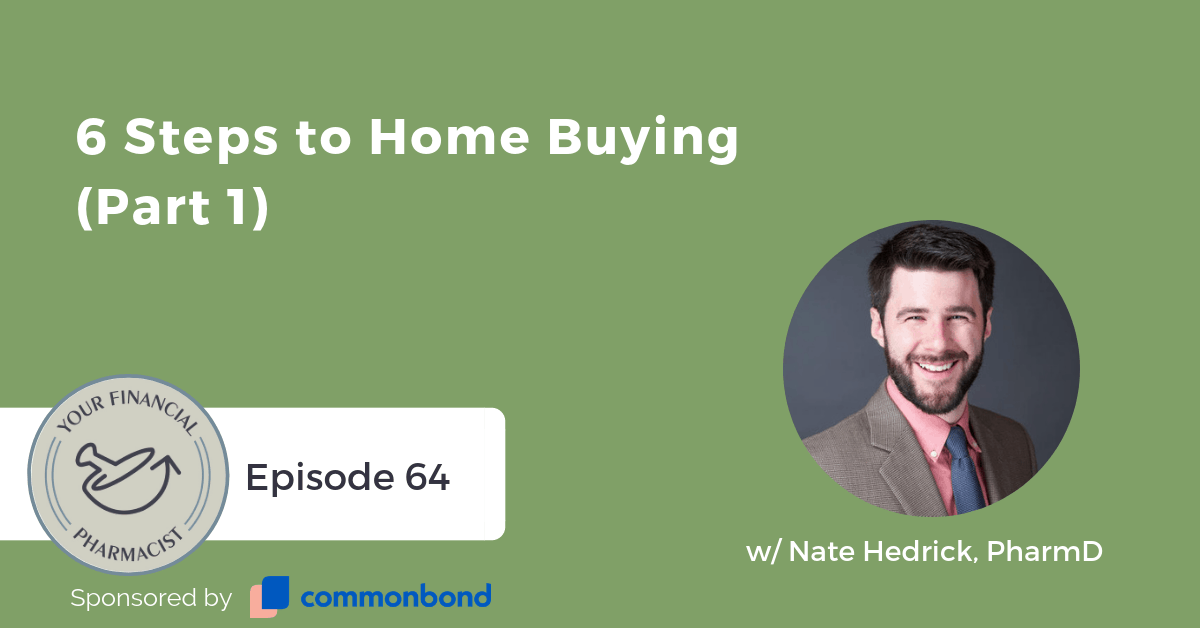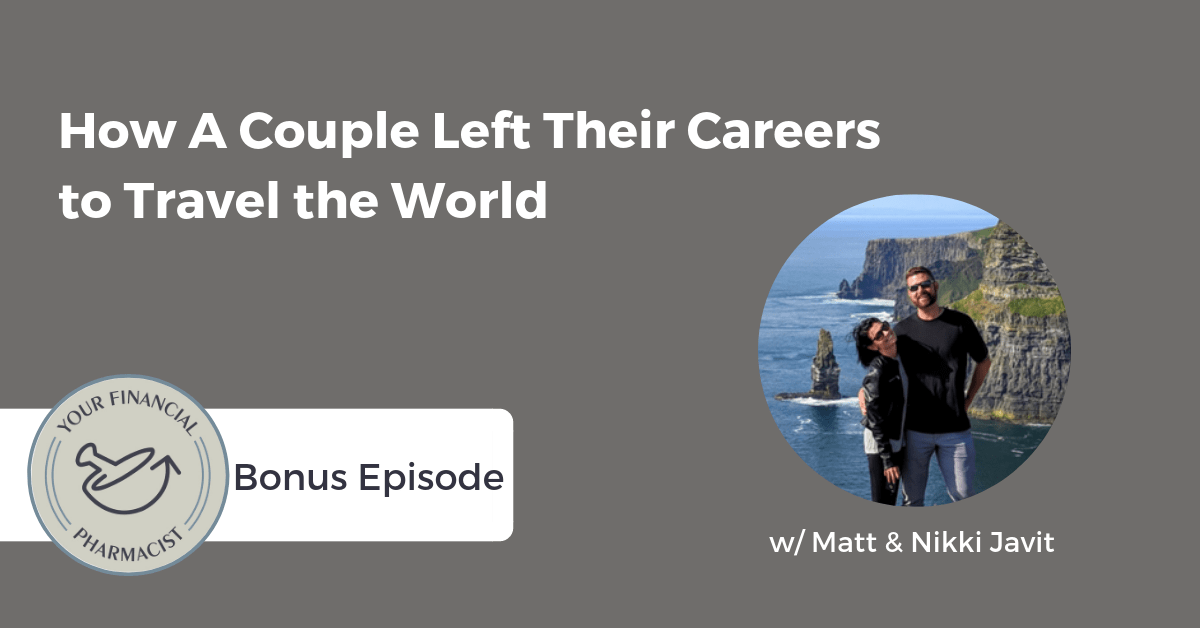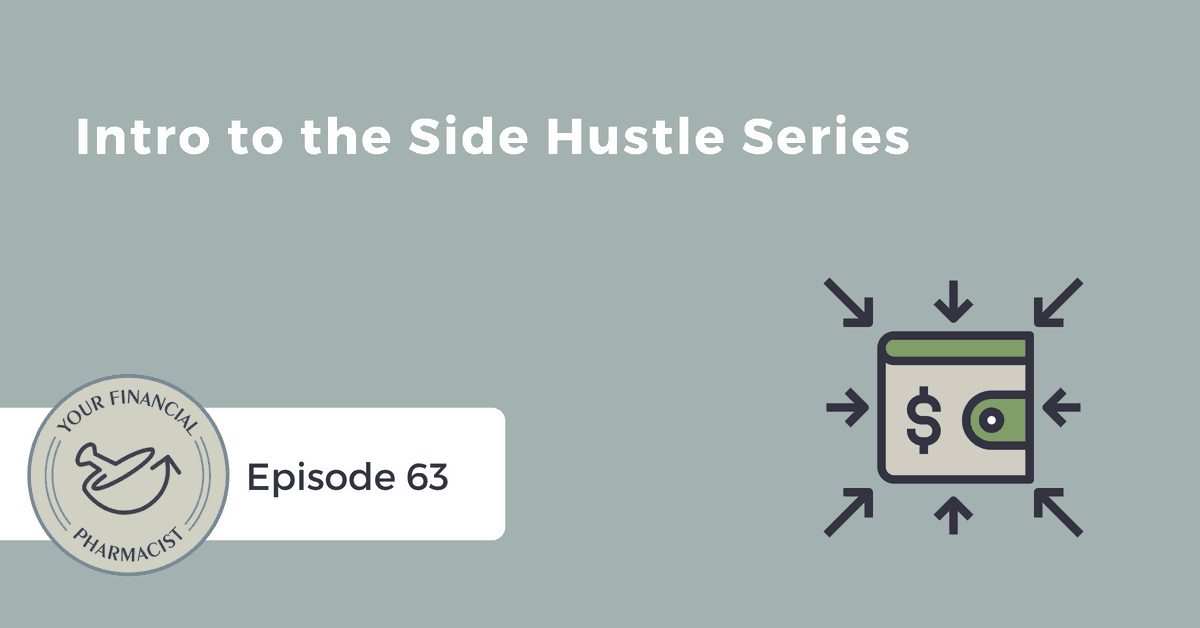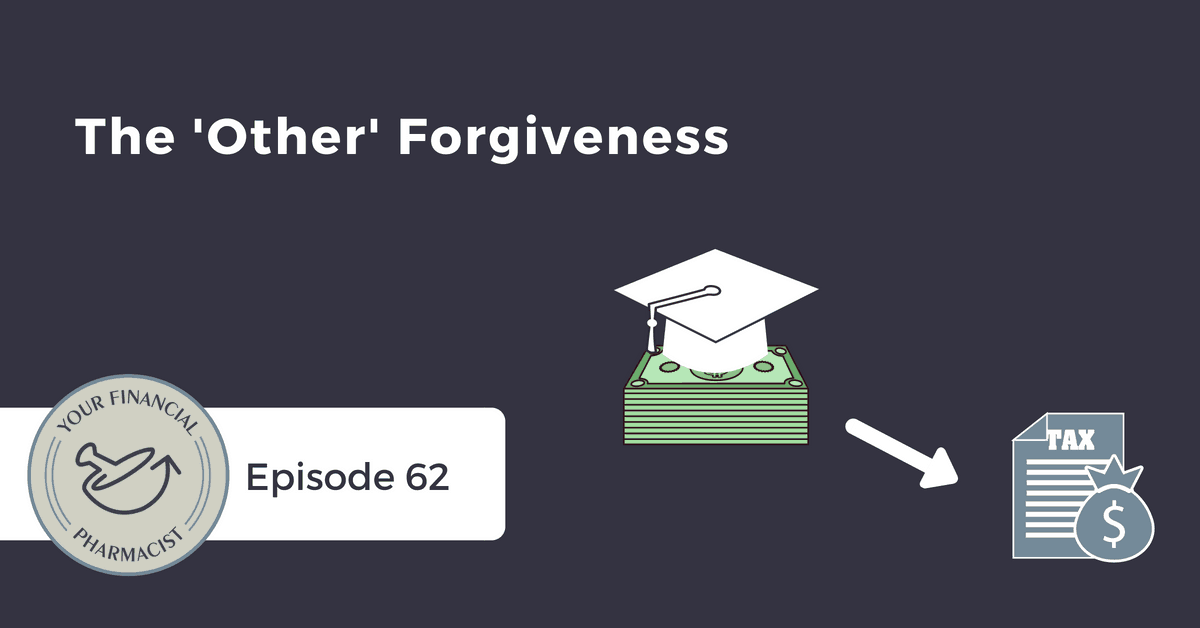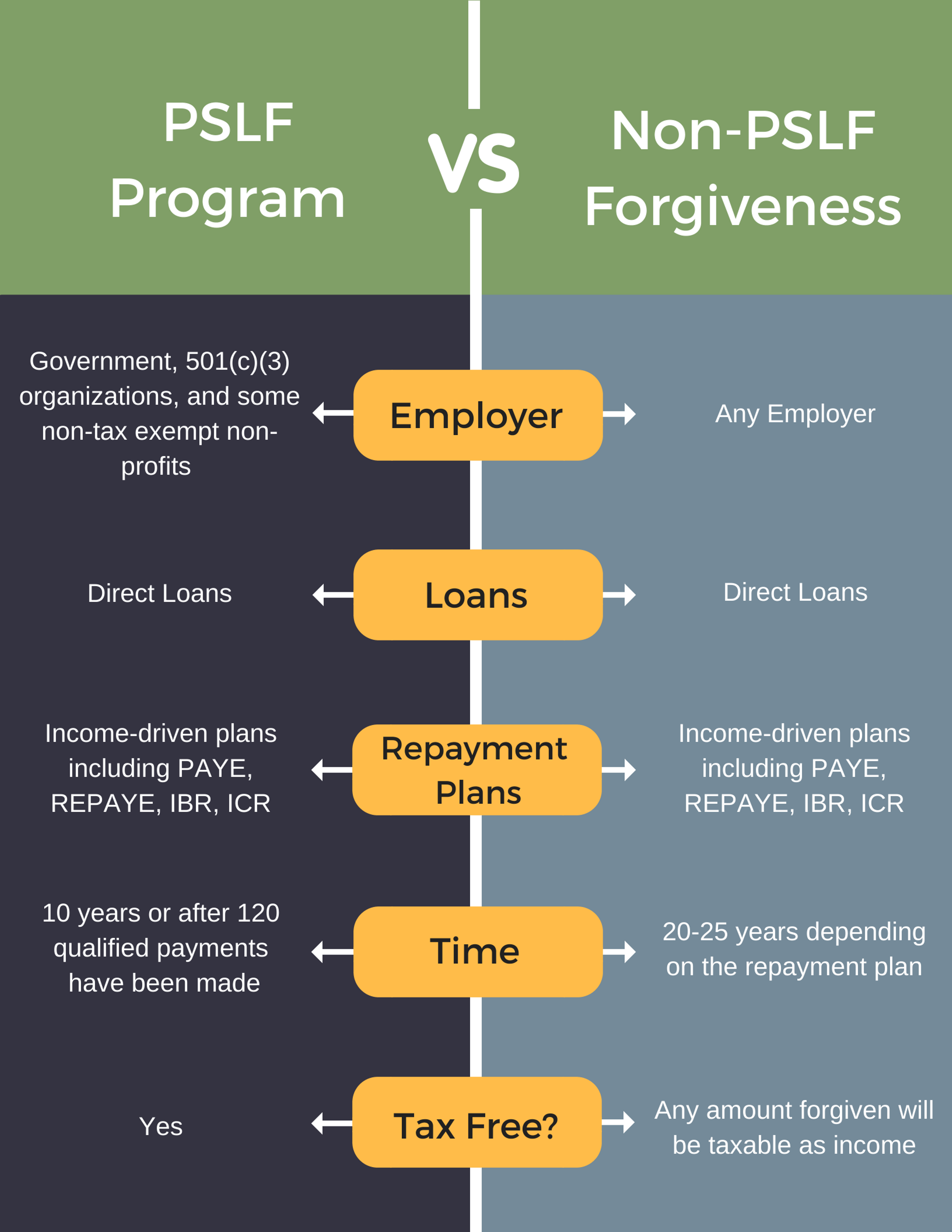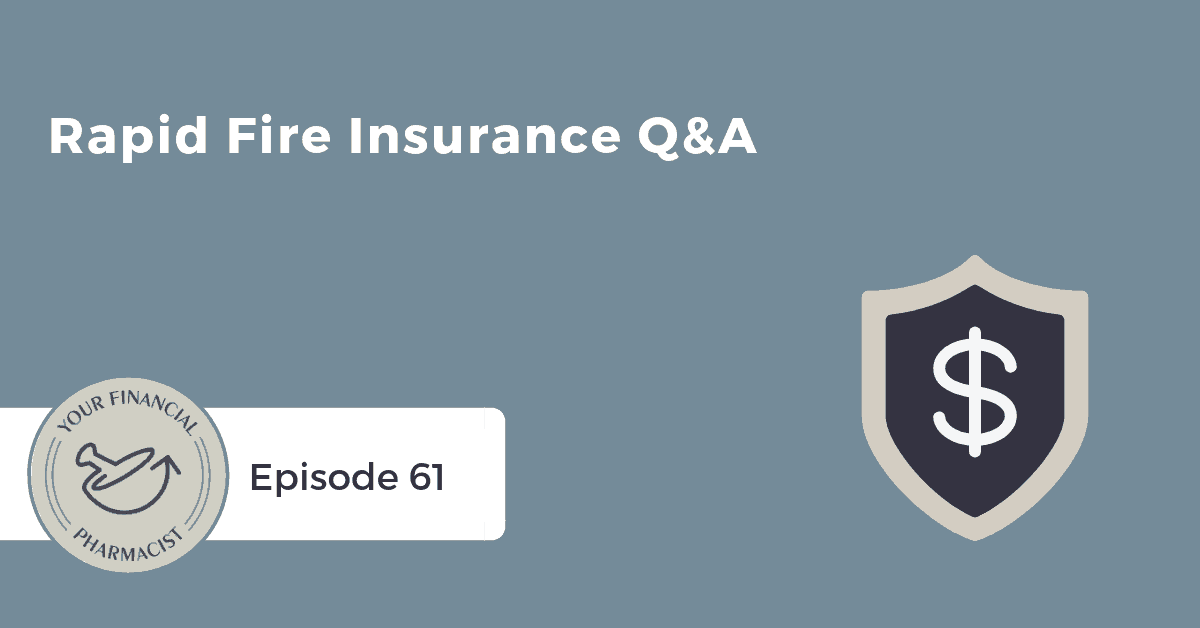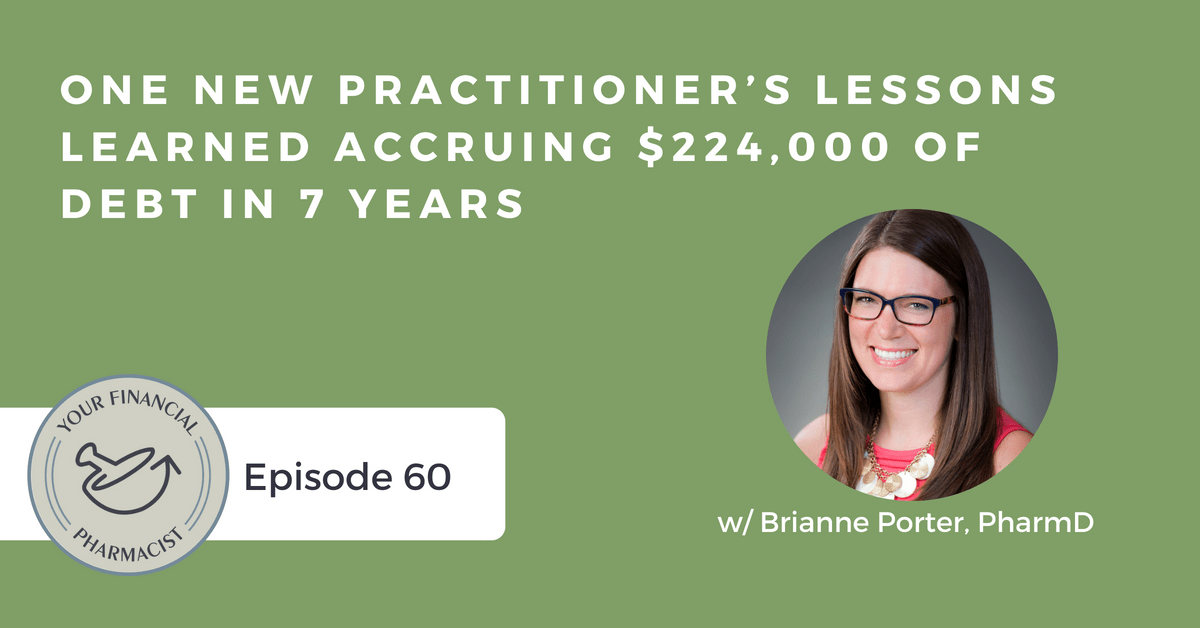Pros/Cons of Dave Ramsey’s Baby Steps
On Episode 068 of the Your Financial Pharmacist Podcast, Tim Ulbrich, Founder of Your Financial Pharmacist, and Tim Baker, YFP Team Member and owner of Script Financial, discuss the pros and cons of Dave Ramsey’s Baby Steps and how they apply to the pharmacy professional.
Summary of Episode
Tim Ulbrich and Tim Baker discuss Dave Ramsey’s baby steps in this week’s episode by sharing their own experiences and answering questions from the YFP community. Dave Ramsey’s 7 steps include:
![]() Step 1 = Save $1,000 for a starter emergency fund
Step 1 = Save $1,000 for a starter emergency fund
![]() Step 2 = Pay of all debt using the debt snowball
Step 2 = Pay of all debt using the debt snowball
![]() Step 3 = Save up 3-6 months of expenses in savings
Step 3 = Save up 3-6 months of expenses in savings
![]() Step 4 = Invest 15% of household income into Roth IRAs and pre-tax retirement accounts
Step 4 = Invest 15% of household income into Roth IRAs and pre-tax retirement accounts
![]() Step 5 = Save for kids college
Step 5 = Save for kids college
![]() Step 6 = Pay off home early
Step 6 = Pay off home early
![]() Step 7 = Build wealth and give
Step 7 = Build wealth and give
Overall, Tim and Tim feel that Dave Ramsey’s baby steps lay out are a great framework for an individual or family to follow and then iterate to their own needs. However, these steps aren’t a financial plan and shouldn’t be used solely as one. There are so many scenarios and possible financial goals and plans that differ from person to person. For some, it might make more sense to follow the steps in a different order or to adjust the amount of savings or contribution toward retirement. Often times steps 5, 6 and 7 are happening simultaneously instead of consecutively following one another once the previous one is completed. It’s important to weigh the emotional part of your financial journey, your attitudes, and feelings toward debt and your goals, and what time frame you are working with when thinking about paying off your debt. These steps don’t include other important aspects of creating a financial plan, such as obtaining disability insurance, potentially using the avalanche method when paying off debt, or really take into consideration the amount of student loan debt a pharmacist graduates with.
Mentioned on the Show
- Splash Financial
- Real Estate RPh
- Dave Ramsey’s Baby Steps
- YFP Facebook Group
- XY Planning Network
- YFP 026: Baby Stepping Your Financial Plan – The 2 Things to Focus on First
- YFP Blog: Why Having An Emergency Fund Matters
- Dave Ramsey’s Financial Peace University
- Dave Ramsey Podcast
- YFP Student Loan Course
- Script Financial
- YFP 022: The Power of Giving – Thanksgiving 2017
- Schedule a Free Call with Tim Baker, CFP
Episode Transcript
Tim Ulbrich: Welcome to Episode 068 of the Your Financial Pharmacist podcast. Tim Baker, excited to be back together on the mic. I think it’s been awhile, right?
Tim Baker: It has been awhile. I feel like we cultivated this baby in the podcast and I’ve, like, been absent for the last few weeks. So I’m excited to be back on.
Tim Ulbrich: Yeah, we had a great month in the month of September doing home buying, all things home buying. Nate Hedrick, the Real Estate RPH joined us. Excited about the partnership with Nate. Excited also to jump into the topic we have today, discussing the 7 baby steps that many are familiar with, recommended by Dave Ramsey. We’re going to talk about the pros and the cons and how we think they do and don’t fit to a pharmacy professional. And we’re going to weave in throughout the show feedback from you, the YFP community, that we’ve gotten via email, the YFP Facebook group and via LinkedIn as well. So Tim, it’s my understanding you’re out at the XYPN meeting right now, correct?
Tim Baker: Yeah, I’m in St. Louis for XYPN Live. I think this is the fourth annual meeting. So XY Planning Network is a group of fee-only CFPs that are trying to bring financial planning to kind of the Gen X, Gen Y generation. So yeah, it’s been good to, you know, rub elbows with some of my colleagues and just get good ideas and bring them back to Script Financial and see how I can better serve clients. So it’s been a good week so far.
Tim Ulbrich: And you’re rocking your YFP T-shirt today? Is that right?
Tim Baker: Yeah, I’m flying the flag, Tim. So you know, we’re going to be talking to a lot of different vendors and things like that. Actually, it’s funny. I was telling you before we started recording that people, you know, my colleagues have kind of noticed what we’ve been doing on the YFP side of things and have taken interest in that. So it’s kind of cool to see that, and yeah, so definitely rocking the YFP T-shirt today.
Tim Ulbrich: Exciting time. So let’s jump into this topic. You know, when I think of the Dave Ramsey 7 Baby Steps — and we’re going to link to them in the show notes, and I’ll talk about them briefly — but for those that are not familiar, we’ll go through them quickly and link to more information. This is such an emotionally charged topic, and so when we posted this week, I said, ‘Hey, YFP Facebook group, YFP community, we’re going to do a podcast recording on the Ramsey 7 Baby Steps. What do you think the good, the bad, how does it work? What are the pros and cons? How does it apply to a pharmacist or not? And for our community personally, those that have walked through this step, what are some success stories or challenges they’ve had?’ So I think based on the response that we got in that post, we’ve got lots to talk about. So you ready to do this?
Tim Baker: Let’s do it.
Tim Ulbrich: Alright, so onto the show. Here’s what we’re going to do. I’m going to walk through briefly the 7 baby steps, so for those that haven’t heard of them before, are not familiar, I’m going to talk about them very quickly. Then, I’m going to get Tim Baker’s thoughts on his opinions at a high level. What does he think about the baby steps? Where do you they work? Where are maybe some areas that need more flexibility? And when it comes to advising his clients, where has he seen these work in both the success route but also in maybe areas that he may disagree with. Now, we’re going to weave in some comments and feedback from the YFP community throughout. So Dave Ramsey’s 7 Baby Steps. If you haven’t heard them before, here they are in order:
Step 1 is save $1,000 for what he calls a starter or a baby emergency fund. Now, we’ll come back and talk about this. We talked in Episode 026 baby stepping into your financial plan, two things to focus on first, which an emergency fund was one of those. We’ll link to that in the show notes. And we also have a blog post on why having an emergency fund matters, so if you want to learn more about this topic, we’ll link to that as well. So Step No. 1, baby emergency fund, $1,000. This is all about getting a quick win and making sure you’re starting to build some protection into your financial plan.
Step No. 2, probably the step, Tim, that causes the most debate — pay off all, all debt using the debt snowball.
Tim Baker: Right.
Tim Ulbrich: So this is referring to credit card debt, student loan debt, car debt. The only exception here to the word all is mortgage, the primary residence, which we’ll talk back and we’ll come back to this in Step No. 6. So Step No. 2 is pay off all debt except for the mortgage using the debt snowball. And we’ll talk about what that means and we’ll dig into that further.
Step No. 3 then is save up 3-6 months of expenses in an emergency fund. So we mentioned Step No.1 is save $1,000 for a starter emergency fund. Step No. 3 is to build up a full emergency fund, which is 3-6 months of expenses. Now, one that he doesn’t publish on his website but he talks often about is Baby Step 3b. And this, I think, Tim, is codeword for “Woops, I didn’t really think about a home. Where should I put it?” So it’s Baby Step 3b, which is save 10-20% down for a home. And I’ve actually heard him reference 10% in some areas, his Financial Peace University class, but also 20% on his podcast. So that’s Step No. 3 and 3b.
Then Step No. 4 as we’re working through these one by one is invest 15% of household into Roth IRAs in pre-tax retirement accounts. So invest 15% of household income into Roth IRAs and pre-tax retirement accounts.
Step No. 5 is save for kids’ college.
Step No. 6 is pay off the home early.
And Step No. 7, probably the most nebulous one, is build wealth and give.
OK, so those are the 7 Baby Steps, and I think it’s worth noting that his recommendation that I’ve heard throughout the podcast and listening to it over the past several years is that steps No. 4, 5, and 6 are actually happening together. So of course you’re not going to invest in 15% possible income into Roth IRAs and pre-tax retirement accounts and be done and check it off. That’s going to be ongoing. Saving for kids’ college is going to happen over a period of time. And paying off the home early will happen over time as well. So steps 4, 5, and 6 are happening over time. So there you have it, the 7 Baby Steps. And I can speak a little bit from personal experience. My wife and I used the 7 Baby Steps in our journey paying off $200,000 of student loan debt. And we worked through them, we made some modifications along the way, which I think is going to lend itself nicely as we get some questions and feedback from the YFP community. So Tim Baker, your thoughts and opinions at a high level on the 7 Baby Steps. Where do they work? And in your experience working with clients, what are some of the successes you’ve seen in clients using these seven baby steps? And where do you think they maybe have a little bit more downside or maybe points of contention?
Tim Baker: Yeah, I think that as a framework, I like it. Now, I think that’s part of the problem with financial planning — because this is essentially like a framework of a financial plan. And I think a lot of people will throw some shade towards Ramsey because, you know, they say, well, it’s not a one-size-fits-all. And I think financial advisors will sometimes give him some backlash because of, you know, he’s too focused on the debt. And if you remember me talking through like, you know, a lot of advisors are paid based on investments. So they’re not incentivized for you to work through your credit card debt or things like that. And then I think there’s just some disagreements about like his particular investment choices. But as a framework, and I think in some of our engagement with the Facebook group and LinkedIn and things like that, there are people that are identifying, saying, ‘Hey, we’re in Step 2. We moved to Step 3, and then we had to move back,’ things like that. So it is more or less a working financial plan that people can identify with and at least benchmark off of. So I’m in favor of that, and I think it’s good to kind of get the blood up a little bit and talk about these things. But I think there are some people that maybe are a little bit more financially savvy that, you know, have their ducks in a row. And they say, ‘Well, this isn’t necessarily how I would do it.’ But for a lot of people that aren’t in that position — and I come across a lot of them, and they eventually become clients, which is a good thing. Where should I put an emergency fund? How much? Why 15%? And what’s a Roth IRA? That type of thing. And I’m not really being facetious, I think some of these things are, they’re true. So for people that go through Dave Ramsey stuff, you know, there’s an assumption, I think, afterwards that they’re going to know more or less which direction they need to go. And from a financial advisor’s standpoint, they don’t necessarily make good clients because they feel like they’re set. But I do think that there are some strengths but also limitations to me overall to the 7 steps. So for example, you know, if I look at the first one, save $1,000 for your emergency fund. You know, I do have clients that are in this position where they have, you know, hundreds of thousands of dollars of student loans, but they have $30,000 or $40,000 worth of credit card debt. So you know, we’re just trying to dig our way out of, you know, paying through the credit card debts but then, you know, having a buffer of like $1,000, that’s a huge step in that direction. So even — you know, some people might look at this like eh, this isn’t for pharmacists. I would say not so fast. There are some situations where that’s going to be true. So like the way I talk about, and I think we talked about this in Episode 026 of the podcast is, you know, let’s baby step our way into that kind of the foundational part of the financial plan, being the emergency fund. So I look at it as kind of look at it in phases. So maybe Phase 1 is $1,000. And as we work our way through some of the — and I think about more the consumer, not predatory debt, but in that where you’re 16-17% — to focus on that first and really not tend too much to the emergency fund. But as you work your way through that, Phase 2 might be to get that to $5,000 because the fact of the matter is, if you’re a single pharmacist and you have a good amount of credit card debt and student loan debt, that alone with your rent could put your emergency in the $20,000-25,000 because you’re multiplying that monthly number by 6, essentially. So for a lot of people to get to that number, they’re going to default on their credit cards before that happens.
Tim Ulbrich: And I think that’s probably the most common thing we hear from pharmacists is they look at this and say, ‘OK, Step 1 is I need a $1,000 baby emergency fund. Step 2, I have to pay off all my debt.’ And so they may be looking at who knows? $200,000 in student loan debt, $20,000 in credit card debt, a $20,000 car note. Then I need to get a full 3-6 months of an emergency fund and then I start thinking about investing. I think that’s the piece where people are like, wait a minute. I’m not going to be investing for 10 or 15 years? And we’re going to come back to that because I think that, you know, the framework, as you mentioned, obviously — and Dave would admit this — is that mathematically, this is not the most advantageous framework to operate from. It’s really a behavioral framework to help people really get the motivation and the mindset and to have some structure around the steps they’re working through. And if we have a thousand people listening to this podcast when we release it, at the end of the day, we have a thousand different financial situations. And I think that speaks to — to your point — that speaks to that this plan by itself probably should not, in my opinion, stand alone but could be paired with the work of a financial planner, could be customized. And I think that if you look at the plan in and of itself, it’s not meant to be a standalone. It doesn’t deal with issues like insurance, end of life planning, investing strategies. You know, we got some feedback from the Facebook group, which I thought was cool. Matt said that he agrees with a lot of the baby steps in terms of them being introductory and getting yourself on track. They’re a good blueprint to getting out of debt. The only problem is what to do after the steps are complete, so they’re not wealth-building steps. And so if you look at Step 7, this idea of building wealth and giving, obviously that’s not necessarily a blueprint for what you should be doing in terms of investing and saving and strategies and end-of-life planning and all those other things that come along with it. However, I will say for those that are listening — and my wife and I just experienced this firsthand — if you feel like you are extremely overwhelmed, don’t know where to start. If you and your spouse maybe where applicable are having difficulty getting on the same page, I think that these steps or it could be another stepwise approach, but having a stepwise approach that you’re working together and achieving and feeling like you’re getting momentum forward, even if that’s not necessarily the most mathematically advantage approach, you can’t speak enough to the value of getting momentum and getting those wheels going forward. Because Tim, how many people do we talk to that say, ‘I’ve been spinning my wheels for seven years, and I feel like I haven’t made much progress,’ right?
Tim Baker: Right. And we’re proponents of — I think there’s some weight to the emotional side of the — we talk about this in the student loan course over and over again. It can’t be just about the numbers. And of course, we’re talking about, you know, for a lot of people, does it make sense to look at PSLF versus not? And in this scenario, in these seven steps, PSLF I don’t think would even be entertained because if you’re trying to pay off in Step 2, the non-mortgage debts as quickly as possible, it’s not even a thing. So if you’re someone that has a lot of student loan debt, and you have the emotion behind it that, hey, you’re anxious or you’re concerned, you can’t sleep at night, these are all things that people have said to me. Then we weight that somewhat heavily because it doesn’t make sense to take a more maybe of a reactive approach, say from a Public Student Loan Forgiveness, and you want to just be more reactive to that. But I think to your point, Tim, that people get riled up about this because potentially in some situations, especially for pharmacists, you might be waiting 10+ years to start putting any money towards retirement and not, you know, capitalize on match and things like that. And I think that’s where I fundamentally disagree with this model.
Tim Ulbrich: So before we go into some of the more detailed questions, let me read off some of those that commented from the Facebook group that talk about the support of this model and I think some of the positive aspects of the success that it can lead to and the behavioral aspects of the model. And then we’ll dive a little bit deeper into maybe where tweaks could be made to this model, depending on individual situations and scenarios.
So Scott says, “The plan is great. It teaches you to focus on just a few things and do them with intensity. You also need to keep in mind that he only teaches very low-risk strategies. If you lost everything like he did, I’m sure you’d have a similar mindset.” So what Scott’s referring to there, if you haven’t heard his story before, Dave essentially — I think it was in his mid-20s — got pretty deep in real estate investing, kind of lost everything. But I do think to his point, as I think through Jess and I going through this approach, intensity is a good word, right?
Tim Baker: Yeah.
Tim Ulbrich: Because when you’re going all in on one step and you’re singularly focused — and yes, to the comments we received, yes that may be at the expense of other things — but that singular focus has to be factored in somewhere into the equation with the mathematical components as well.
Tim Baker: And I think he uses — what does he use, like gazelle-like? You want to be gazelle-like. I think that’s his term. And I see that, you know. I have clients that come in, I want to buy a house, I want to travel the world, I want to start saving for my kids’ education. There’s I want to pay for my wedding, there’s a million different things. And part of my job is to cut through some and say, OK, what’s most important? Because you can do a little of a lot of things, or you can do a lot of one or two things. Typically, the latter is a better prescription for that.
Tim Ulbrich: Dalton says, “You can’t really argue with its effectiveness. The number of people who have gotten out of debt and built wealth through his plan are incredible. He even acknowledges that the plan doesn’t necessarily make mathematical sense all the time because the benefits of compound interest and retirement savings but always follows that up with the fact that being in debt doesn’t make mathematical sense either because if personal finance was all about math, people wouldn’t spend more than they make. I think that it makes sense for pharmacists mostly if they live like a college student still after graduation. You could actually pay off your loans decently fast, as long as lifestyle creep doesn’t happen.” And then he goes on to talk a little bit more about Baby Step No. 2. So let’s jump in there because I think we had a couple questions from the group about Baby Step 2, which makes sense, right? Because pharmacists are facing average debt loads of $160,000. So Dave Ramsey, in speaking to whatever, 5 or 10 million listeners every week, obviously their average debt load is not $160,000. So that is a unique piece to our audience. And Cole asks the question, “I’d love to hear your thoughts about stopping retirement investing and losing the match while in Baby Step 2.” So talk to me about your thoughts as you’re working with clients, typical pharmacist, $160,000 of debt, maybe you’re thinking about this in the frame of these baby steps. We’ve talked before about the match being a no-brainer, let’s take it. But how do you balance this retirement and student loans or at least looking at the match component while in Baby Step 2.
Tim Baker: Yeah, so just a comment on Dave and like the student loans. Like, I think when I first started hearing some of his stuff about the student loans, like he would almost fall off his chair when like a doctor — I think for awhile, I think a fair criticism of him was that he was a little out of touch. And I’ve seen some things where he’s like almost browbeat people, and that’s not productive. But I think in more recent times, he’s come around and he understands a little bit more about the student loan picture. So that’s the first thing. I think the third thing for me personally is — and I say this when we speak to pharmacy schools and, you know, different organizations is — you know, they say the two certainties in life: death and taxes. And I would add that you should, for the most part, match your 401k or your 403b. I think that is for the majority of people the thing to do because it’s one of those things that the whole thing, it’s free money. Unless you’re in dire, dire straits from a predatory or some type of debt, I wouldn’t do it. If it’s student loan debt, absolutely. You need to be doing the match.
Tim Ulbrich: So death, taxes, and the match are three certain things in life?
Tim Baker: I think so. That’s Tim Baker’s amendment to that. So I think by and large, if you’re not doing that — because most of the time, especially because it comes out tax-free, you’re not missing it. So if you’re an employer — and most employers, it’s 3%, 5%. It’s not like you’re asking to give up 10%. Some are structured like that to get the full match, but to get the full match is typically a small percentage of your income. So that would be my thoughts there. And you know, I kind of with the invest the 15% of household income, I kind of say as a general rule of thumb, which these are, to start getting it in your brainpiece for newly minted pharmacists and new practitioners is a race to 10%. Because what often happens is that you do get the match, you get 5%, and you have the 401k inertia. I talk to you years later, and you haven’t increased it at all. So in their mind, I try to plant the seed. It’s a race to 10%, so if you couple that with the match, you know, you are in that 15% range. And that’s typically, when we do the nest egg calculations, which we did on the APhA webinar here recently, the Investment 101 and 102, the nest egg is going to show that that is, more likely than not, true to be in that range.
Tim Ulbrich: Yeah, and I think this is a great example as you think through Baby Step 2 and this question that Nicole throws out there is that this is not a black and white framework, as we’ve already talked about, especially with everyone’s customized situation. So if you’ve heard Dave talk on the podcast or taken any of his courses like Financial Peace, I think he uses an average time range of debt repayment too of about 18 months or less. So again, a pharmacist with $160,000 as a graduate does not match the national average of somebody coming out from undergrad with $25,000-30,000. Now of course they have a higher income potential, but he’s then under the assumption — when you think about steps 3, 4, 5, 6 and so on — that that debt in Step 2 is going to be gone quickly. Now, if you’re somebody listening that’s got $30,000 or $40,000 of debt, maybe that’s the case. But if you’re somebody that has $200,000 of debt, you know, unless you’re hustling like Adam Patterson-style, Tim Church-style, that’s probably not going to be happening. So now, you have to have this discussion and balance and work with somebody like you as a financial planner to say, OK, what is this timeline of debt repayment? Not that we’re going to carry this on forever, but what is the debt repayment strategy? And then how do we now fit retirement savings into there. Because you and I would both agree that if somebody’s paying off their loans for 10 years, probably not contributing to retirement is not a good idea. Not probably — it’s not a good idea.
Tim Baker: Right.
Tim Ulbrich: But if somebody’s hustling for 2-3 years, that conversation is very different, especially if there’s some behavioral momentum that’s going to be happening. Now, I would agree with you 100% that that match is a given in all of those situations, it doesn’t matter whatever the debt repayment period is in my opinion. I think that that should be there.
Tim Baker: Yeah, and I think the other thing to take note of, call out here that I commend for him is, you know, he’s talking — again, I’ve listened to him talk to doctors that have a truckload of debt. And he’s like, “Oh, you’ve got to hustle.” Even though the make hundreds of thousands of dollars, he’s encouraging them. He’s like, you’ve got to take up, you’ve got to get extra shifts. So he’s not resting on your laurels just because you make a six-figure income. So you know, the people that we’ve highlighted, the Pattersons, the Churches, they’re trying to hustle. They’re thinking of additional ways to increase income, which I think is something that kind of falls by the wayside because we’re always talking about how can we cut our expenses? But it’s a two-sided equation. So I would say that that is something to focus on as well.
Tim Ulbrich: Yeah, and just to wrap up this Baby Step 2 and how do you balance the loans with the investing and what’s your time period, I would say that, you know, for many listening, the answer’s going to be different. We’ve talked a lot on the podcast before and live events that we’ve done about how do you make this decision between investing and paying down loans. I don’t think we need to get in the weeds here, but this really comes down to the factors like interest rates, what is your feelings toward the debt? How is your investing style? All of these things, and for everyone listening, that answer’s going to be a little bit different, which will obviously help determine where you’re going to go with that. Tim, Tyrell asks that he says that he’d like to hear pros and cons of paying off house versus student loans if working toward PSLF or towards PSLF or other forgiveness components. So he’s talking about working for a qualifying company, pursuing Public Student Loan Forgiveness, and obviously then that changes your strategy about paying off your loans, correct?
Tim Baker: Yeah, because, you know, typically, the way to optimize that strategy is to take, you know, Step 4, which is invest 15% of Roth IRA and pre-tax retirement accounts and really cross off the Roth because the Roth is after-tax and put as much money as humanly possible into pre-tax retirement because what that effectively does is lower your adjusted gross income, which affects how much you — which is the number that calculates your payment for student loans. So the lower that your AGI is, the lower that your payment is, and the more that you potentially will be forgiven. So there’s a lot of moving pieces to that. So I would say if you’re weighing paying off a house versus student loans, to me, the picture is are we getting the $18,500 into the 401k or the 403b maybe since it’s a nonprofit. Are we maxing that out? You’re probably not afforded a pre-tax IRA deduction because pharmacists typically make too much. But are you maxing out the $3,450 or the $6,900 if you’re a family in the HSA to get that if you have a high deductible plan. Once those things are checked off, then I would say, OK, you know, what are the goals? And maybe paying off the house is that. But if that house is, you know, if the rate’s 3.25, I don’t know. I don’t know if that’s the best way to go. Some people, again, I know Leah Donnells made a comment on this, and she’s a client of mine, and her mantra is, their mantra is they want to get through the debt as quickly as possible. So they, regardless of what the mortgage or interest rate is, they want that out from underneath them. And I can’t blame them because if you think about, hey, we’re striving for financial independence, what is a greater measurement of that when you don’t have to pay the bank your rent or mortgage anymore? So Tyrell, that’s a good question. But again, there’s a lot of moving pieces and I would say focus on the pre-tax accounts and max those out before, you know, throwing more money towards the house.
Tim Ulbrich: So Tim, you know Dave’s a big advocate in Step 2 about the debt snowball. And Ryan in LinkedIn says, you know, as he’s talking about the pros and cons of this model, he says, “Why should I use the debt snowball method? It works great for those people who really benefit from the psychological impact and reward of paying off small debts. But for those who don’t benefit from it will potentially spend more money in the long run.” So give us the quick overview of the debt snowball, how that contrasts to the avalanche method. And as you’re working with clients, how do you guide or advise them in terms of which of those methods may work best for them?
Tim Baker: So the debt snowball method is basically where you write out all of your or you have all of your debts laid out: what kind of debt it is, what the interest rate, what the minimum monthly payment is, and what the balance is. And the idea is to pick the debt that has the lowest balance and pay the minimums on all the other debts. And then for the one that has the lowest balance, you want to pay as much toward that as humanly possible. So when that one falls off, when that debt is paid and dead and gone, then you roll that payment into the next lowest balance. And then when that one falls off, you roll that payment into the next lowest balance. So this is really trying to clear liabilities from the balance sheet. And the idea is that that gives you, if you focus on the lowest one, it gives you a psychological advantage, it gives you momentum, that type of thing. The avalanche method, in contrast, is where you do the same thing except the priority payment is based on the interest rate, not on the lowest balance. So you want to focus on the highest interest rate — this is typically credit card debt and that type of thing — and you pay the minimums on everything else. And then when the highest interest rate falls off, then you direct your attention to the next highest interest rate. So from a math perspective, this makes the most sense because you want to clear those debts off that you’re paying the most interest on. So that’s really the difference between those two. Now, working with clients, theoretically, I coin flip. It’s one of those things where from a math perspective, yes, it does make sense to do the avalanche. But it’s the same thing with everything else. If you’re doing this on your own, don’t get into the paralysis by analysis. Just pick one method and go. For a client that I have, you know, $30,000 of credit card debt with that’s spread out across 20 different cards, to me, it’s just about clearing the balance sheet so she can, you know, work through those effectively. So now, it’s more of an organizational thing. So in that situation, we’re employing the snowball method because it’s almost unwieldy to handle. So it just really depends on where your mind is, if you’re running the math and you’re maybe less emotional towards it, avalanche. If you’re thinking that, hey, it’d be really nice to log into your credit card account or if I plug my client portal that you can sign up for on my website, Script Financial, you can see all of your, you can link all of your accounts and see a dynamic net worth statement. If you see a list of liabilities there that’s $10,000, $12,000 deep, and you really want to log in in six months and see $6,000, then I would say probably the snowball method would be the better route to go.
Tim Ulbrich: Yeah, and I think the time period is critically important here as well, right? So if you’re talking about a wide array of interest rates over a long period of time, say 10 years, obviously the math on that is going to become more advantageous toward the avalanche method. If you’re talking about I’m going to pay off whatever debt we’re referring to in a short period of time, and the interest rate’s aren’t that different, or some combination of that in a couple years, then obviously the math doesn’t matter as much. Does it still matter? Yes, of course. But you have to, again, make this determination about your own behavioral patterns and choices and how important that momentum is or is not. And as I think back to the journey that Jess and I took, that momentum for us was critical, even at the expense of paying a little bit more interest because as we were going through whatever step, let’s use Step 2 as an example, if we were going through a snowball method, if I knew we needed $2,000 more to pay off this loan to get to the next one, we were that more motivated to stay on budget or to look for additional opportunities to earn income, whatever it be, that I’m not sure for us collectively as a couple, we would have been as motivated if we would have been working that through the avalanche method. So did we spend a little bit more interest? Yes. But did we get it paid off faster? For us, I think we probably did. But again, back to the point of customization for somebody else listening, somebody else commenting, that may be a very different situation if for them, it’s very black-and-white, and they can work the system going through the interest rates. I want to encourage for a minute. Amber posted on the Facebook group that, “My spouse and I follow these baby steps, and they are great for getting out of debt. Our problem keeps showing itself on Step No. 3, which is the full 3-6 months of emergency fund. We complete it and are ready to move on, and we have somewhat. But then, wham, something happens and we are right back on No. 3. We’ve been stuck like that for several years now, but living without debt is really freeing and wonderful.” So I think again, it speaks to the power of getting out of debt. But I think is something Jess and I felt as well is that when you talk about something like paying off debt, it can be very exciting to see that balance come down. When you talk about investing, it can be very exciting. Building an emergency fund is not necessarily super exciting. And so obviously, they’ve had some things come up that have derailed them from doing that. But I think for those that are in the grind of building an emergency fund, to your point earlier about how much that could be, $15,000, $20,000, $25,000, $30,000, $35,000, that’s not super exciting. But it’s certainly a critically important step and a foundational part of a financial plan. Tim, wanted to get your thoughts on this. This I think speaks to I think maybe where you have some customization to this seven-step plan. Katie says, “After graduation, we DR’ed our way to becoming debt free.” I love that he has his own DR.
Tim Baker: Yeah, when do we get YFP’ed?
Tim Ulbrich: Seriously, YFP our financial plan, right?
Tim Baker: Can we hashtag YFP’ed? Get that trending on Twitter maybe?
Tim Ulbrich: I like that. Be a trademark, yeah. “The main tweaks we made in the beginning were splitting steps 2 and 3 equally, so equal amounts going toward the emergency fund and debt reduction until we had enough saved, and then we maxed out our own tax-preferred accounts before kids college. It’s not a perfect system, great for debt elimination, not ideal for investing, but it’s simple and gives a roadmap for those starting out. It worked well for us.” So what do you think about that idea of balancing the savings for emergency fund with paying off student loans or other debt?
Tim Baker: Yeah, I mean I think that’s exactly what the point is is like, this is a template for then people can iterate off of. And this is what I was talking about with like having, you know, Phase 1, Phase 2, Phase 3 in terms of, you know, Phase 1, it might be get the $1,000 or $2,000. Have a emergency fund that probably covers 80% of emergencies in your situation. And then from there in Phase 2, now maybe go through and start paying off debt and apply maybe little. I think this is a perfect example of how, you know, they looked at the situation and said, well, this doesn’t work entirely for us, so we’re just going to iterate. And again, bias, you know, I think they did it well themselves working off the two of them, but this is where I think a financial planner can come in and provide a little bit of guidance and objective opinion and say, this is what I would do and these are the recommendations. So I think that’s the power of this is people look at it as a benchmark and then they can iterate off of it and apply it to their own lives.
Tim Ulbrich: Absolutely. And so just to build on this a little bit more, Mark asked and has a comment in the Facebook group, and I can speak to this one. I dealt with this last year. He says, “I’m on Baby Step 2 and I’m really concerned about this idea of not having a credit score. Has anyone used manual underwriting to buy a house? And probably because I don’t fully understand a credit score, but I’m a little concerned about not getting a job because of it.” So I think what he’s referring to is that Dave’s a big advocate for no credit cards, cut them up, get rid of them, pay off all your debt, etc. And obviously, there’s some concern about having no credit when it comes to purchasing a home. If you currently are paying a mortgage, Mark, what I learned throughout this process is that that mortgage payment will still provide you with a credit score. Now, if you don’t have a mortgage and you have no credit cards, then obviously after a period of time of having no credit cards and not making mortgage payments, your credit score will effectively be reduced to 0, which could present problems when it comes to purchasing a home. You certainly could do manual underwriting. There is lenders that are out there that do that, just give yourself some more lead time. It will probably take more time. And we didn’t experience this or get to this point, but I’ve heard — Tim, I don’t know if you’ve heard — that sometimes in a manual underwriting process, you may end up paying a little bit higher of an interest rate.
Tim Baker: Yep.
Tim Ulbrich: So something to balance and think of throughout that process. Tim, want to get your thoughts on this. Lisa says, “I definitely don’t think Step No. 4 should be No. 4.” So No. 4, again, is 15-20% into retirement savings and tax advantage accounts. She said, “It should be closer to No. 1. I have always been taught that saving for retirement as early as possible is a necessity and you should think of that 10-15% money as unusable for anything else. So whatever your net income is, write 10-15% off, and that is your new net income. It’s very easy to push that kind of saving off.” So here she says, “For me, it was more like year one post-graduation, it was Baby Step 2 was immediate, very high interest debt like credit cards.” Then she went to Step No. 4, setting up 401k. Then went to Step 1 and 3 of saving an emergency fund. And then as she went into year two post-grad, she further went into Step 4, saving enough to put max in a Roth IRA, into retirement. And then year three post-graduate, she went back into Step 2 to pay off student loans. So I think the risk that I would have with this — I certainly fundamentally agree with what you talked about before of getting that race to 10%, right? Getting that behavior set up for retirement. But doing that at the expense of any emergency fund, I think you’re putting yourself in a risky situation. Would you agree?
Tim Baker: Yeah, I would. I mean, I probably would put it as, you know, maybe 1a. So I think — you know, I was talking to a prospective client the other day, and I was asking him, you know, if something were to happen from an emergency standpoint, what would you do? And the answer is kind of like, eh, credit card or bank of mom and dad. And I think those are two habits that we probably need to wean off of and break. So I’m always — you know, it’s not the sexiest thing, although I get jacked up every time, you know, an interest rate happens. We’re both Ally proponents. Whenever you get the interest payment in your emergency fund, I think that’s cool. But I’m a big proponent of having some cash set aside for those emergencies and then get serious about at least getting the match. That’s kind of how I view it.
Tim Ulbrich: So as we wrap up this episode, Tim, I think that as we look at this framework, I think you and I would both agree that it’s meant to be exactly that. It’s meant to be a framework, it doesn’t apply to everyone’s personal situation, there’s caveats. And again, I think that speaks to the power of individualized, customized financial planning. And I would highly encourage our listeners, if you’re not a part of the YFP Facebook group, head on over, join the group, there’s great conversation going on on this topic as well as many other topics related to your personal financial plan. And that group is really all about encouraging, motivating and inspiring each other in this community of pharmacists, all committed to being on this path towards achieving financial freedom. So Tim, any last thoughts here on the Ramsey plan as we begin to wrap up the episode here?
Tim Baker: Yeah, I would just say, we didn’t focus too much on 5, 6 and 7. You know, I would just say that, you know, the whole saving for kids’ college, that’s not a given for a lot of people, even pharmacists that have gone through kind of student loan hell. That doesn’t necessarily mean that they’re in a position or even there’s a want to do that. So that might be something that we can, you know, address a little bit more in the future about different strategies to do that. And I would say paying off the home early, we addressed that a little bit. It also depends, and finally, I think No. 7 is kind of like, you get to the end of this and you’re kind of released out into the wild and to build wealth and everything is good. But you know, for build wealth — for what purpose? You know, I often say that typically the way that I price my services is based on income and net worth, which is great because I’m incentivized to kind of help you grow income and help you grow net worth over time. But if we fast forward 20, 30 years, and you’re sitting on $10 million but you’re miserable because you haven’t done the things that you’ve wanted to do, then that’s not a wealthy life. So I would say build wealth, but to what end. So last year, you know, you did an episode on giving, which is part of kind of 7b in the build wealth and give. But not everyone has that same worldview, so you know, some people are, they want to give 10% right off the bat of their income, you know, even if they have debt. Some people are even if they don’t have debt, they don’t really feel inclined to give. So it’s just different. But I would say that a big one that’s probably missing from here, especially from a pharmacist’s perspective is disability insurance. If you don’t have any coverage at all from an employer, the ability to work and earn really needs to be protected. So that would be one of the things that I would probably edit from a pharmacist’s perspective. But I think it’s a great list, it’s a great template to look at and to build off of and to iterate for your own purposes. So I think this is a great episode because we had a lot of engagement on the Facebook group, and I hope it keeps going because I think people learn when we shine a light on it.
Tim Ulbrich: Yeah, and to your point, I think we’re going to come back and do a lot more on all of these topics, but especially in 5 and 6, you know. We haven’t done a ton on college savings. And that’s an interesting one because I think especially as we think about pharmacists coming out with such high debt loads, I think there’s a tendency, myself included, to maybe put that one at a different priority than it should be because you’re compensating from your own experiences, and you don’t want to put your own children through that. So you know, 529s, ESAs, what’s the strategy? What’s the timing of that? How do you balance that with retirement, your current debt, all those other things? And then as you mentioned, even in Step 6 and the home, how you prioritize that, what’s your interest rates? What’s your other goals related to real estate? What’s your motivation? Do you care about the debt? Do you not? How do the new tax laws impact all of that? We’re going to come and talk more about that into the future. So I think there’s lots of people that are out there listening today, Tim, to this episode, that are thinking of the Ramsey plan, thinking about the framework but are finding themselves spinning their wheels with their own financial plan, lots of competing priorities coming at them, not sure in what order and how this applies to their own personal situation. And as we talked about, this plan is not intended, the Ramsey steps are not intended to be a standalone financial plan. And so I know personally, you have lots of clients who know these steps, maybe some are following them to a T, others are not. But they still value the one-on-one approach in terms of working with you and working with a financial planner. So for those that are listening that want to take that next step, get engaged with you as a financial planner to learn more, what’s the best next step they can do to do that?
Tim Baker: Yeah, Tim, it’s super easy. You can either go to the Your Financial Pharmacist website and click on the “Hire a Planner” tab at the top and then you can schedule a free call on that page. Or just go to ScriptFinancial.com and on the homepage, you’ll see a “Schedule a Free Call” button there. So those are really the two ways to find me and schedule a free call.
Tim Ulbrich: So again, that’s YourFinancialPharmacist.com. You can click on “Hire a Planner,” and then from there, you can schedule a free call with Tim Baker to discuss next steps. So Tim, great to be back on —
Tim Baker: Yes.
Tim Ulbrich: the podcast with you. Have a great time at the XYPN conference. And we’re certainly looking forward to having you back as we continue with some great content coming forward.
Tim Baker: I’m going to be YFPing this conference. Trending on Twitter.
Tim Ulbrich: Awesome. Love it. Love it. So as we wrap up today’s episode of the Your Financial Pharmacist podcast, I want to take a moment to again thank our sponsor, Splash Financial.
Sponsor: If you’re looking to refinance your student loans, head on over to SplashFinancial.com/YourFinancialPharmacist, where in just a few minutes, you can check your rate. Splash’s new rates are as low as 3.25% fixed APR, which can literally save you tens of thousands of dollars over the life of your loans. Plus, YFP readers receive a $500 welcome bonus for refinancing with Splash. Again, that’s SplashFinancial.com/YourFinancialPharmacist.
Tim Ulbrich: Thank you so much for joining Tim Baker and I on this week’s episode of the Your Financial Pharmacist podcast. Next week, Tim Church and I will be tag-teaming some updates related to student loans, including the latest on the Public Service Loan Forgiveness program. Also, for those graduates that are getting ready to come out of the grace period and enter active repayment, we will talk about repayment options and strategies. If you like what you heard on this week’s episode, please make sure to subscribe in iTunes or wherever you listen to your podcasts. Also, make sure to head on over to YourFinancialPharmaicst.com, where you will find a wide array of resources designed specifically for you, the pharmacy professional, to help you on the path towards achieving financial freedom. Again, thank you for joining us, and have a great rest of your week.
Join the YFP Community!
Recent Posts
[pt_view id=”f651872qnv”]

